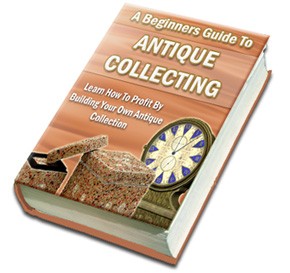 License Type: Master Resell Rights
License Type: Master Resell Rights  File Size: 6,846 KB
File Size: 6,846 KB File Type: ZIP
File Type: ZIP
 SKU: 663
SKU: 663  Shipping: Online Download
Shipping: Online Download
Ebook Sample Content Preview:
WITH the aid of methods learned from Near Eastern potters the Moorish conquerors of Spain established a number of potteries. There, they produced an earthenware decorated brilliantly in a copper-coloured lustre, known as Hispano-Moresque ware. With the reconquest of Spain and the expelling of the Moors, the making of this and other pottery was continued by the Spaniards themselves. These wares reached Italy in the fifteenth century by way of Majorca, and the name of that island, where they were supposed wrongly to have been made, was given to them in a corrupted form: majolica.
Italian-made majolica, a tin-glazed earthenware that is comparable to the faience of France, the Delft of Holland and the delftware of England, was at first an imitation of the imported product, but it soon achieved a style of its own. It was made principally between the fifteenth and seventeenth centuries, and although some was made after the latter date it has neither the interest nor the importance of the earlier pieces. The Italian ware was sent to other European countries, and inspired their potters in turn to produce ware of a comparable high standard. The painting of majolica is its greatest beauty and the artists who did it were masters of both line and colour. Not only were the nearly flat surfaces of dishes used for coloured pictures that remind us of the glory of the Italy of the early sixteenth century, but the round pot, known as an albarello, was equally lavishly and diversely painted. The chemist's shop of the time was a general meeting-place as well as a medical emporium, and the shelves held numbers of colourful albarelli containing drugs and ointments. Among the places famous for their majolica potteries are:
Faenza, Florence, Caffagiolo, Urbino, Castel Durante, Gubbio, Savona, Siena, Deruta and Venice, all of which are in the northern half of Italy, but there were many less-important centres in both north and south. The subject of majolica is a very wide one; much study has been given to it and many books written about it during the past hundred years. Only rarely are fine specimens to be obtained and, understandably, when they are, they command high prices.
Italian majolica was exported to all the countries of Europe, and greatly affected the wares they made. In some instances, Italian potters were induced to settle abroad and teach local men how to improve their work. This occurred at Antwerp, in particular, and with the invasion of Flanders by the Spaniards in the late sixteenth century the potters fled northwards to Holland.
Dutch tin-glazed pottery, known by the name of the town of Delft where it became established eventually, was made in great quantities and much was sent to England. Not only was there a big trade in dishes and other domestic wares, but Dutch tiles were sent also. These were of sufficient importance to become a separate branch of pottery-making; some men made them to the exclusion of all else, and sets of tiles were painted to be placed together and form pictures.
- File Size:6,846 KB
- License: Master Resell Rights
- Category:Ebooks
- Tags:2007 Ebooks Master Resale Rights








